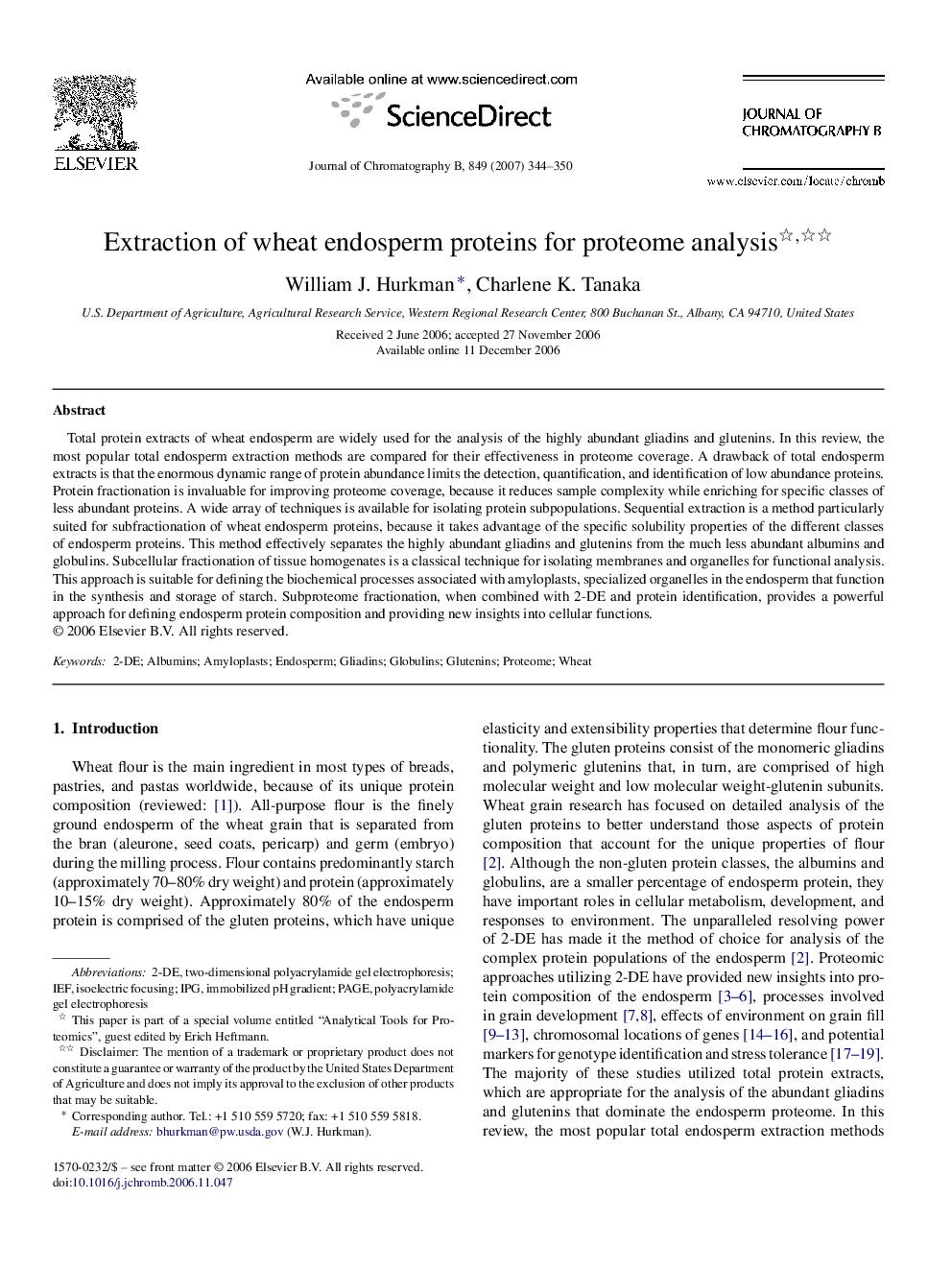| Article ID | Journal | Published Year | Pages | File Type |
|---|---|---|---|---|
| 1217868 | Journal of Chromatography B | 2007 | 7 Pages |
Total protein extracts of wheat endosperm are widely used for the analysis of the highly abundant gliadins and glutenins. In this review, the most popular total endosperm extraction methods are compared for their effectiveness in proteome coverage. A drawback of total endosperm extracts is that the enormous dynamic range of protein abundance limits the detection, quantification, and identification of low abundance proteins. Protein fractionation is invaluable for improving proteome coverage, because it reduces sample complexity while enriching for specific classes of less abundant proteins. A wide array of techniques is available for isolating protein subpopulations. Sequential extraction is a method particularly suited for subfractionation of wheat endosperm proteins, because it takes advantage of the specific solubility properties of the different classes of endosperm proteins. This method effectively separates the highly abundant gliadins and glutenins from the much less abundant albumins and globulins. Subcellular fractionation of tissue homogenates is a classical technique for isolating membranes and organelles for functional analysis. This approach is suitable for defining the biochemical processes associated with amyloplasts, specialized organelles in the endosperm that function in the synthesis and storage of starch. Subproteome fractionation, when combined with 2-DE and protein identification, provides a powerful approach for defining endosperm protein composition and providing new insights into cellular functions.
